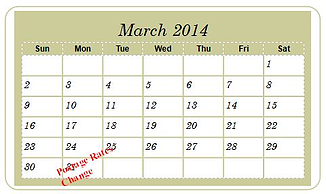The announcement by Canada Post that they will raise postage rates by up to 35% after  March 31 2014 is an indication of how decisions of outside forces can significantly affect businesses adversely. Whether it is postage, taxes, utilities, key supplier price increases or any other item the ability of most businesses to absorb these kinds of impacts is a challenge. Individually they might be small but collectively the bottom line impact can be significant for any business.
March 31 2014 is an indication of how decisions of outside forces can significantly affect businesses adversely. Whether it is postage, taxes, utilities, key supplier price increases or any other item the ability of most businesses to absorb these kinds of impacts is a challenge. Individually they might be small but collectively the bottom line impact can be significant for any business.
Let's look at the postage rate increases and consider the implications and some ways that you might deal with the potential negative consequences. Of course how much impact there will be is a factor of how much postage is a cost factor in your business, however for every dollar you used to spend on postage once the rate increase goes through you could be spending 35% more. That is 35 cents of less profit per individual letter if nothing else changes.
The worst case of this challenge is Canada Post has declared what it will do for 2014 but the announced five year plan also indicates that they plan to balance their books and if they are unable to do so with internal changes then what will the impact on rates be in the next five years? Does it make sense to continue to institutionalize postage increases into your plans or are alternative actions in order?
Considerations
The first thing to do is to look at how you buy your postage and how you manage its use. If you use a postage meter to process postage you have more control due to built in weighing capablity, integrated rate structures and security of access to your postage. This is all good and is one of the reasons many businesses have had postage machines for years.
For the first time Canada Post has announced that postage processed through a meter will permit lettermail and other categories of mail to be processed at lower rates than when using stamps. This makes sense since Canada Post does not have to manage the production and handling of indicia for metered postage as this is done by the vendors of the equipment.
The good news in this step is the impact of the increase on lettermail is reduced from over 35% ($0.63 to $1.00) to 19% (40.63 to $0.75). While this is still a increase, it does represent a lower impact and cost. In addition due to the accuracy of handling mail with a meter unit the potential of over postage is much reduced, further saving costs. Not perfect but better.
The second thing to do is to look at your processes and see if there are ways in which you can reduce your dependency on mail. One way to do this is to manage the production stream of items you have to mail. One major category for many businesses has been invoicing. Traditional practice saw invoices and statements being printed, stuffed and mailed often in the hundreds or thousands of pieces per day.
One process change that can fairly easily be put into place is to use specialized software to pre sort the invoice and statement stream for each target and produce as many of them as possible in an alternate, electronic way which does not require postal processing. The usual substitutions would be fax or email. There is special software which can take a data base of customers, relate them to an invoice type preference (mail, fax, email) and produce the invoice in the matching form. Printed for mail processing, electronically faxed for fax and converted to pdf and emailed for that grouping. Incentives can even be provided to encourage customers to receive their invoice in an alternative, less costly form. This has been done for consumers by many utilities and banks encouraging email billing.
If you process 1000 invoices a week at $0.63 postage cost that is $630 a week or $32,760 a year. If you continued to process the same volume and used a meter to process (anyone with this volume would have a meter for sure) then the new cost will be $750 per week or $39,000 per year. If all things stay even then you are now $6240 less profitable than before the rate increase.
How much would you spend to see if you could improve your process to gain back some of the cost increases or even reduce them overall? If you could change the process to redirect 30% of your invoices to less costly processing then you save over $9000 pre rate increase and over $11700 post the increase. Just think what 50% or 75% does to your bottom line. Its worth some time and investment to make this happen.
The third step is to look at your whole document flow and your processes to see if there are ways you could reduce your costs by reducing paper flow in your organization, streamline flows and investigate alternatives for more robust changes like implementing EFT (Electronic Funds Transfer), portals or other means. Looking at the complete stream of document flows may identify steps, pieces or activities which are redundant, unnecessary or cumbersome and which could be altered for even more benefit.
With the lastest round of Canada Post increases many businesses are looking for fresh ways to reduce their document handling costs and frustrations.



